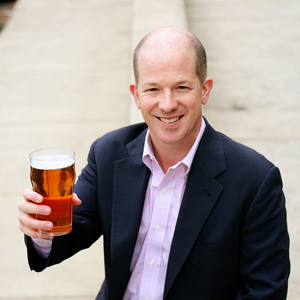The Rise of the Beer Cities
This year at the Craft Brewers Conference (CBC), we learned that craft beer, as defined by the Brewers Association (BA), has 11 percent market share of U.S. beer volume, up from just 6.5% in 2012. That’s spectacular growth. The annual conference was held in Portland, Oregon, where the craft share is closer to 60 percent.
Much has been written here and in other places about the mature beer community that is Portland. One city that doesn’t get a lot of attention, but is oddly similar in its beer culture, is Cleveland, Ohio. While it’s not often referenced as a leading beer city, craft share in bars, restaurants and entertainment areas is 48 percent, greater than San Diego, Austin, Tampa, and Denver.
Cleveland’s beer growth is tied directly to its Ohio City neighborhood, an area with a rich brewing history dating to the mid-19th century. The neighborhood served as a Midwest brewing center, slowly fading over time though until the last of a great era—C. Schmidt & Sons—closed in 1984. The turnaround began in 1988 when Great Lakes Brewing Co. opened, and today it is also home to Market Garden Brewing Co., Platform Beer Co. and Nano Brew. Any beer-loving tourist would find a happy home in Cleveland, as the downtown and surrounding communities are full of other high-quality brewers.
What these two cities also show us is how brewers can push and support one another. Ohio breweries, like Brew Kettle, Fat Head’s and Columbus Brewing Co., are making a big name for themselves racking up national consumer awards for their IPAs. This success pushes other nearby brewers to learn more about hop quality, flavors and the best ways to get the desired results from hop additions. In Portland, very well-respected and recognized commercial brewers meet regularly to share their beers, dissect them and lend an ear to help their fellow brewers improve and grow. And yes, these breweries also compete directly against one another for beer consumer dollars, but the benefits from this collegiality come directly in improved beer and experiences for all of us.
Both Portland and Cleveland have small brewers expanding into much larger, sophisticated homes. When breweries make massive leaps in scale, such as Cleveland’s Market Garden Brewery, opening its “Palace of Fermentation” this summer, they have the opportunity to achieve substantial technological improvements in quality and stability for their beer. Not only are these big investments fantastic destinations for a community, but they can also substantially raise the quality-control points for the brewer as well. And when that happens, it certainly forces those other brewers in the area to raise their game.
All this growth and market share is moot without one important thing: quality. At CBC, the BA’s director, Paul Gatza, reminded everyone how critical quality is to the continued success for small brewers in these heady days of growth. There are dozens of ways that small brewers can manage and improve that quality. But in Cleveland and Portland, and many other places, we see firsthand how the market around brewers is creating change for the better. Enjoy it thoroughly, coming to a city near you.
This column appears in the September 2015 issue of All About Beer Magazine. Click here to subscribe.
Chris Rice
Chris Rice is the President & Publisher of All About Beer Magazine.


Leave a Reply